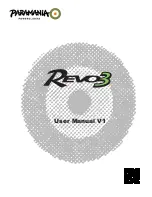
P92 Echo Super
Maintenance Manual
13
Revision Date: 10-29-2007
Revision Number: 3.01
!
!
!
!
!
!
!
!
SECTION 3
INSPECTION & SERVICING
!
!
!
!
3 Inspection and Servicing
!
3.1 Ground Handling
Move the aircraft on the ground by pushing on the wing struts close to wing attachments or by pulling on the propeller
blades close to hub. It is preferable to use a tow bar. A tow bar can be attached to fittings provided on nose gear fork.
Aircraft can be steered using the rudder or, for sharp turns, by lowering the tail to raise the nosewheel off the ground. In this
case, owing to the favorable CG location, a gentle push on the tailcone just ahead of empennage surfaces is all that is
needed. Avoid dragging nosewheel sideways and do not attempt to counter any movement of the aircraft by handling it by
its wing tips.
!
3.2 Parking and Tie-down
As a general precaution for outdoor parking, it is wise to position aircraft into the wind and to set the par king brakes or
chock the wheels if chocks are available.
In severe weather and high wind conditions, aircraft tie-down is recommended. Tie ropes should be secured to the wing tie-
down fittings located at the upper end of each wing strut. Secure opposite end of ropes to ground anchors. Nose gear fork
may be used as fixing for forward tie-down.
Aircraft control stick should be locked using safety belts to prevent possible wind damage to control surfaces.
!
3.3 Jacking
Given the light empty weight of the aircraft, lifting one of the main wheels can be easily accomplished even without the use
of hydraulic jacks. Remove the aluminum panel located between the steel springs and, while one person lifts one half-wing
by acting on the wing spar immediately before the wingtip, another person will place a suitable stand with protect ive cover
under the steel spring attachment.
If one of the steel springs needs to be removed, the support stand must be positioned in the specific location along the
landing gear support beam (do not place support against lower aluminum panel as doing so would deform and damage the
panel). Prevent possible tip-over of the aircraft by placing a suitable stand to rear of aircraft.
!
WARNING
!
As a general rule, apply force to aircraft structure only on main structural elements such as frames, ribs or spars.














































